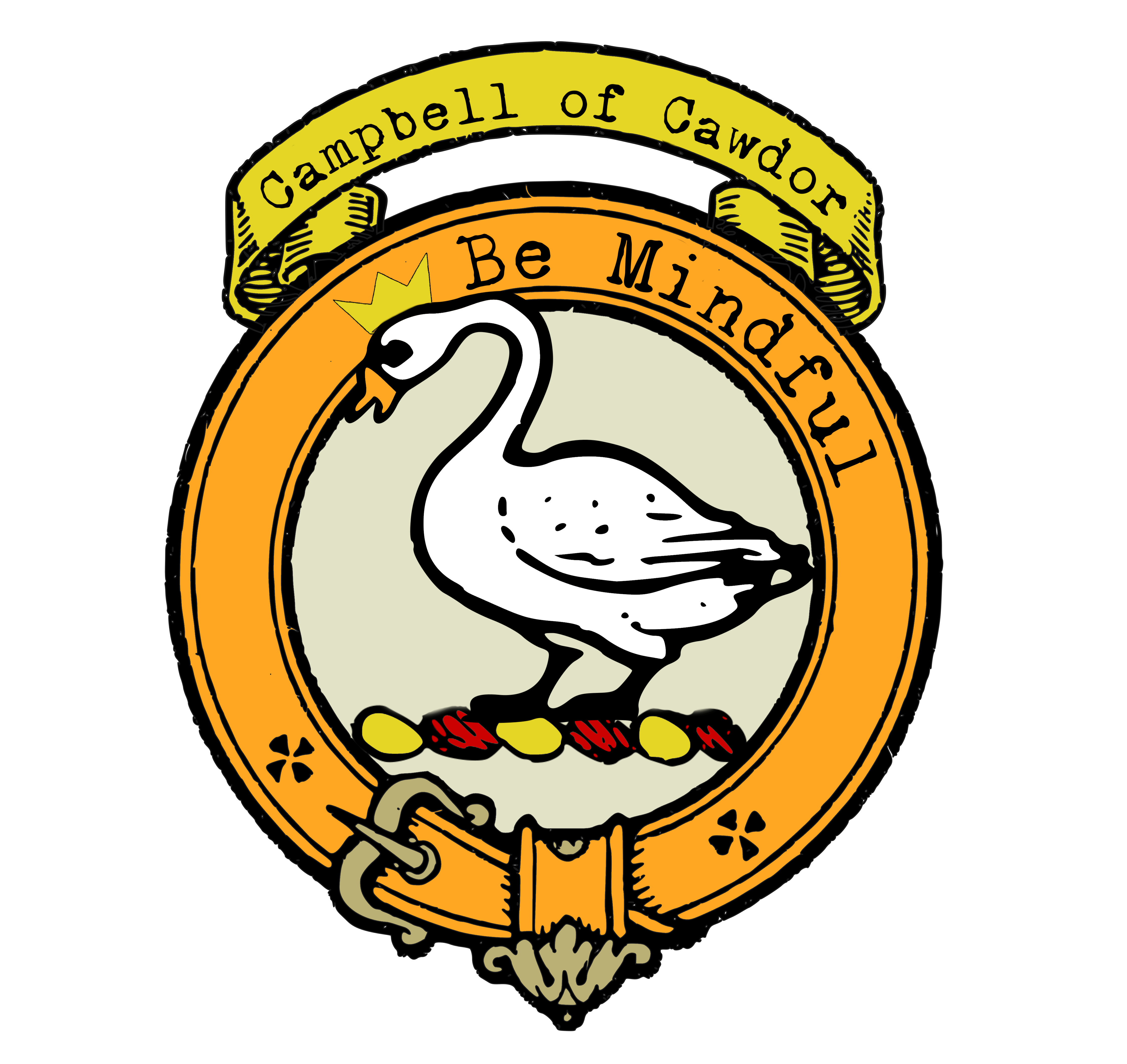Campbell of Cawdor
|
|
CREST: A boar’s head fessways erased Or, armed Argent, langued Gules MOTTO: ne obliviscaris TRANSLATION: Do not forget VARIATIONS: N/A |
| The Clan Campbell of Cawdor is one of the most notable branches of the larger Clan Campbell, which played a significant role in the history of Scotland. The Cawdor Campbells, in particular, have a fascinating history that spans several centuries, with the family being linked to some of the most prominent events in Scottish history.
The origins of the Clan Campbell of Cawdor can be traced back to the marriage of Muriel, daughter of Sir John Calder of Cawdor, to Sir John Campbell of Calder, a younger son of the chief of the Clan Campbell, in the late 14th century. This marriage brought the Calder lands of Cawdor into the Campbell family’s possession, and it was not long before the Campbells became the dominant power in the region. The first Campbell of Cawdor was Sir John Campbell, who was granted a charter of the lands of Cawdor in 1454. The family’s fortunes continued to rise, and in the late 16th century, the Campbell of Cawdor was appointed one of the guardians of the young 7th Earl of Argyll. However, the family was soon embroiled in a conspiracy by some of the other guardians, who sought to murder the young Earl and his brother. Campbell of Cawdor was one of the victims of this conspiracy, but the young Earl survived and went on to become a successful soldier who later united the clan. The Clan Campbell of Cawdor’s fortunes continued to rise throughout the 17th and 18th centuries. In the 17th century, the family acquired the thanedom of Cawdor, and the castle became the family seat. The castle is now a popular tourist attraction, with its picturesque gardens and fascinating history. The family’s loyalty to the Crown brought them many rewards, and the Cawdor Campbells continued to hold prominent positions in Scottish society. Archibald Campbell, the 7th Earl of Argyll, was granted former Macdonald lands in Kintyre in 1807. In 1615, Campbell of Cawdor was allowed to purchase Islay and most of Jura, which had previously belonged to the Macleans of Duart. However, the family’s loyalty to the Crown also brought them many challenges, particularly during the Scottish Civil War in the mid-17th century. At the Battle of Inverlochy in 1645, the clan suffered the biggest single defeat in its history. The 8th Earl of Argyll attempted to maintain a precarious balance between his espousal of the Covenant and his support for Charles II’s attempts to win his father’s throne. But it was a balance too fine to be maintained, and the earl was executed for treason after the Restoration. His son, the 9th Earl, was also executed, this time as a result of his support for the rebellion of Monmouth against the king. The Clan Campbell of Cawdor’s fortunes were restored during the Revolution of 1688, and in 1703 William of Orange created the 10th Earl, Duke of Argyll and Marquess of Lorne and Kintyre, with a string of lesser titles. The second Duke was one of the first officers of the British army to be promoted to the rank of field marshal. He was succeeded by his brother, the most influential man in Scotland and a proponent of the Treaty of Union in 1707. Today, the Clan Campbell of Cawdor is still going strong, with several members of the family holding prominent positions in Scottish society. The family’s legacy is felt not only in Scotland but also in other parts of the world, |
|
Purchase @ Redbubble
Purchase @ Amazon.com
Purchase @ Amazon.co.uk

